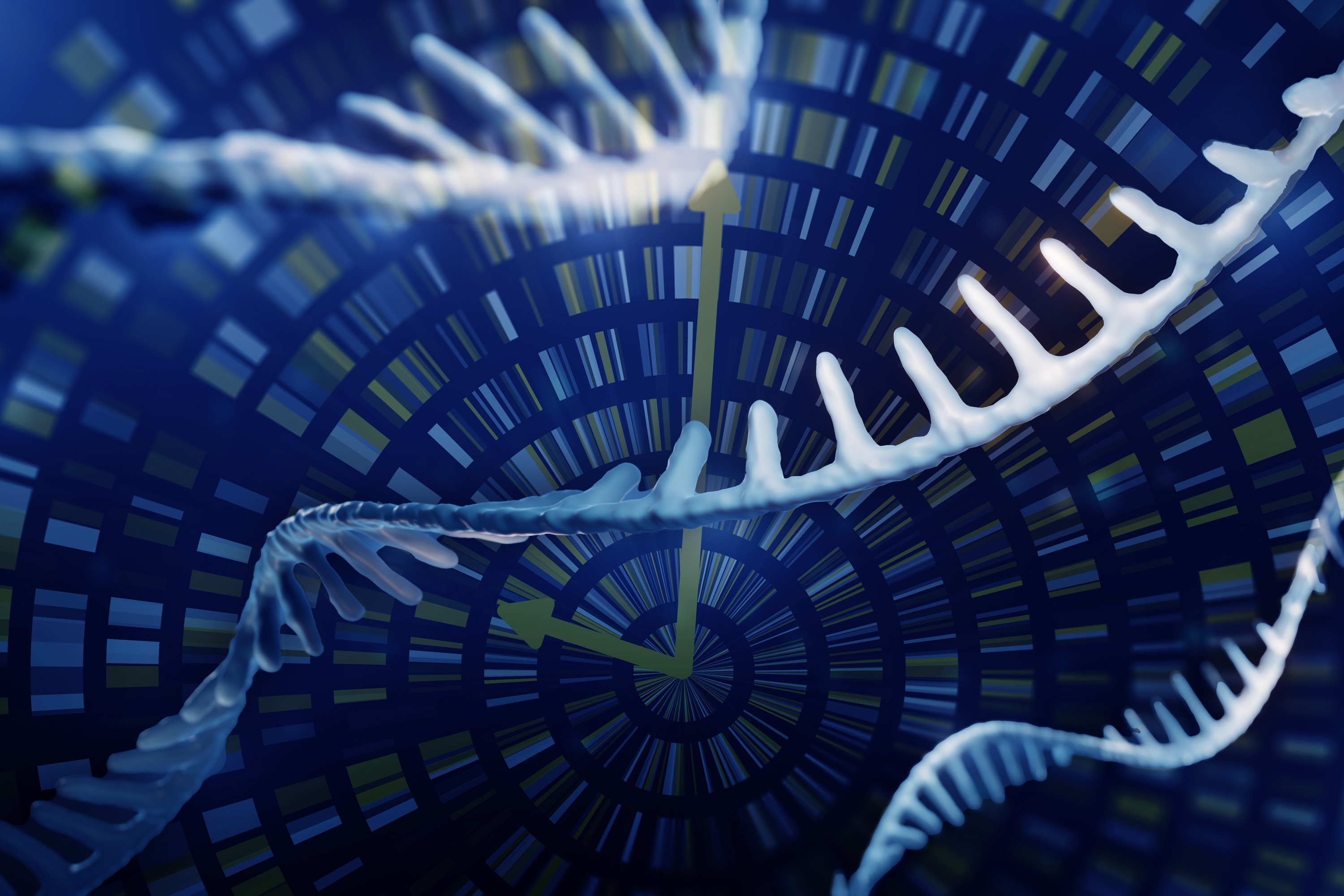Outflowing galactic winds from exploding stars may explain the enormous rings. It’s not every day astronomers say, “What…
How is AI Being Used in the Entertainment Industry? – Technology Org
AI is spreading its tentacles in every sector, and the entertainment industry is one of its biggest beneficiaries….
“A Consonant Please, Rafiki!” Primate Countdown, the Ancient Shift from Vowels to Consonants – Technology Org
Experts from the University of Warwick have found that the shift from dense forests to open plains during…
Russia Used North Korean Ballistic Missiles to Attack Ukraine – Technology Org
For months it’s been known that Russia is getting ammunition and, possibly, weapons from North Korea. At first,…
5 Ways To Prevent Supply Chain Issues In 2024 – Technology Org
After the numerous challenges caused by the pandemic began to subside last year, many business leaders and analysts…
Check Out Final Fantasy 14: Dawntrail’s New Job, Race, And Full-Length Cinematic Trailer

Over the weekend, Square Enix revealed new information about Dawntrail, Final Fantasy XIV’s upcoming fifth expansion, during a fan event for the popular MMO. In addition to unveiling a lengthy cinematic trailer, fans got a look at one of the game’s two new jobs and its new playable race.
Meet the Pictomancer, a new class described as a “magical ranged DPS job that works in the medium of mixed aether, wielding a specialized brush to render their imaginings reality.” Basically, the Pictomancer is a painter wielding a giant magical brush that conjures spells using paint. Check it out in action in the trailer below:
[embedded content]
A new cat-like race called the Hrothgar was also revealed in the form of a female variant. The trailer below provides a glimpse of the race out in the wild.
[embedded content]
Lastly, the big video is a 5+ minute cinematic trailer showing off Dawntrail’s vibrant tropical setting, tone, and plenty of beautifully rendered action.
[embedded content]
Last year, Square Enix announced that Final Fantasy XIV is finally coming to Xbox Series X/S this spring. During the event, the studio revealed that an open beta test of the Xbox version begins sometime in February, giving players their first taste of the game before its arrival.
Final Fantasy XIV: Dawntrail is slated to launch later this summer. For more info, check out this primer breaking down everything you need to know about the expansion.
Survival Driving In Pacific Drive | New Gameplay Today

In Pacific Drive your station wagon is all that stands between you and destruction in a section of Washington state where reality is constantly shifting. Join Wesley LeBlanc, Alex Van Aken, and me as we play through an early section of the game and show off how this unique driving survival game is going to work.
Pacific Drive will be available on PlayStation 5 and PC on February 22. For more on the game, you can check out our extended preview here.
[embedded content]
Head over to Game Informer’s YouTube channel for more previews, reviews, and discussions of new and upcoming games. Watch other episodes of New Gameplay Today right here.
Immortality’s Unsettling Mystery Comes To PlayStation 5 This Month

Sam Barlow’s acclaimed interactive cinematic mystery game Immortality is making its way to PlayStation 5 on January 23. The game first arrived on Xbox Series X/S and PC in August 2022.
Like Barlow’s previous works, Her Story and Telling Lies, Immortality sees players interacting with live-action footage to solve the mystery behind the disappearance of fictional actress Marissa Marcel (Manon Gage). Once a promising young star, Marcel only made three movies – none of which were ever released – before she vanished.
Learning what happened to Marcel involves searching out dozens of clips of each film’s behind-the-scenes footage, scrubbing them for clues, and finding related videos using the ability to “match cut.” This mechanic allows players to click on elements within a scene (like a person or object) to uncover new clips featuring that selected element. The PS5 version enhances these mechanics with new haptic feedback and controller speaker features.
[embedded content]
Immortality’s unsettling atmosphere, inventive mechanics, and strong storytelling earned it a place on Game Informer’s Top 10 Games of 2022. Immortality is also available now on Xbox Series X/S, PC, and mobile devices via Netflix.
Kaitlyn Dever Joins The Last Of Us TV Show As Abby

Kaitlyn Dever has been officially announced as The Last of Us TV adaptation’s Abby. Kaitlyn Dever is perhaps best known for her role in 2019’s Booksmart, but video game fans may know her best as the voice of Cassie Drake, seen at the end of Uncharted 4: A Thief’s End. Dever was also an early fan cast for the role of Ellie when casting rumors for The Last of Us TV show first began swirling. She also reportedly read for the role of Ellie before it ultimately went to Bella Ramsey.
Abby is a crucial character from The Last of Us Part II, but to say much more than that would spoil major elements of the plot that it’s fair to assume many TV viewers are not yet aware of. How Dever will differentiate from the video game version of Abby, performed by Laura Bailey (who had a cameo in the first season of the show as a nurse), remains to be seen.
Despite the second season of the show likely not airing until 2025, The Last of Us has already had a strong 2024, raking in eight Emmy awards. For more, read Game Informer’s review of The Last of Us and then read Game Informer’s review of The Last of Us Part II.
Noninvasive technique reveals how cells’ gene expression changes over time

Sequencing all of the RNA in a cell can reveal a great deal of information about that cell’s function and what it is doing at a given point in time. However, the sequencing process destroys the cell, making it difficult to study ongoing changes in gene expression.
An alternative approach developed at MIT could enable researchers to track such changes over extended periods of time. The new method, which is based on a noninvasive imaging technique known as Raman spectroscopy, doesn’t harm cells and can be performed repeatedly.
Using this technique, the researchers showed that they could monitor embryonic stem cells as they differentiated into several other cell types over several days. This technique could enable studies of long-term cellular processes such as cancer progression or embryonic development, and one day might be used for diagnostics for cancer and other diseases.
“With Raman imaging you can measure many more time points, which may be important for studying cancer biology, developmental biology, and a number of degenerative diseases,” says Peter So, a professor of biological and mechanical engineering at MIT, director of MIT’s Laser Biomedical Research Center, and one of the authors of the paper.
Koseki Kobayashi-Kirschvink, a postdoc at MIT and the Broad Institute of Harvard and MIT, is the lead author of the study, which appears today in Nature Biotechnology. The paper’s senior authors are Tommaso Biancalani, a former Broad Institute scientist; Jian Shu, an assistant professor at Harvard Medical School and an associate member of the Broad Institute; and Aviv Regev, executive vice president at Genentech Research and Early Development, who is on leave from faculty positions at the Broad Institute and MIT’s Department of Biology.
Imaging gene expression
Raman spectroscopy is a noninvasive technique that reveals the chemical composition of tissues or cells by shining near-infrared or visible light on them. MIT’s Laser Biomedical Research Center has been working on biomedical Raman spectroscopy since 1985, and recently, So and others in the center have developed Raman spectroscopy-based techniques that could be used to diagnose breast cancer or measure blood glucose.
However, Raman spectroscopy on its own is not sensitive enough to detect signals as small as changes in the levels of individual RNA molecules. To measure RNA levels, scientists typically use a technique called single-cell RNA sequencing, which can reveal the genes that are active within different types of cells in a tissue sample.
In this project, the MIT team sought to combine the advantages of single-cell RNA sequencing and Raman spectroscopy by training a computational model to translate Raman signals into RNA expression states.
“RNA sequencing gives you extremely detailed information, but it’s destructive. Raman is noninvasive, but it doesn’t tell you anything about RNA. So, the idea of this project was to use machine learning to combine the strength of both modalities, thereby allowing you to understand the dynamics of gene expression profiles at the single cell level over time,” Kobayashi-Kirschvink says.
To generate data to train their model, the researchers treated mouse fibroblast cells, a type of skin cell, with factors that reprogram the cells to become pluripotent stem cells. During this process, cells can also transition into several other cell types, including neural and epithelial cells.
Using Raman spectroscopy, the researchers imaged the cells at 36 time points over 18 days as they differentiated. After each image was taken, the researchers analyzed each cell using single molecule fluorescence in situ hybridization (smFISH), which can be used to visualize specific RNA molecules within a cell. In this case, they looked for RNA molecules encoding nine different genes whose expression patterns vary between cell types.
This smFISH data can then act as a link between Raman imaging data and single-cell RNA sequencing data. To make that link, the researchers first trained a deep-learning model to predict the expression of those nine genes based on the Raman images obtained from those cells.
Then, they used a computational program called Tangram, previously developed at the Broad Institute, to link the smFISH gene expression patterns with entire genome profiles that they had obtained by performing single-cell RNA sequencing on the sample cells.
The researchers then combined those two computational models into one that they call Raman2RNA, which can predict individual cells’ entire genomic profiles based on Raman images of the cells.
Tracking cell differentiation
The researchers tested their Raman2RNA algorithm by tracking mouse embryonic stem cells as they differentiated into different cell types. They took Raman images of the cells four times a day for three days, and used their computational model to predict the corresponding RNA expression profiles of each cell, which they confirmed by comparing it to RNA sequencing measurements.
Using this approach, the researchers were able to observe the transitions that occurred in individual cells as they differentiated from embryonic stem cells into more mature cell types. They also showed that they could track the genomic changes that occur as mouse fibroblasts are reprogrammed into induced pluripotent stem cells, over a two-week period.
“It’s a demonstration that optical imaging gives additional information that allows you to directly track the lineage of the cells and the evolution of their transcription,” So says.
The researchers now plan to use this technique to study other types of cell populations that change over time, such as aging cells and cancerous cells. They are now working with cells grown in a lab dish, but in the future, they hope this approach could be developed as a potential diagnostic for use in patients.
“One of the biggest advantages of Raman is that it’s a label-free method. It’s a long way off, but there is potential for the human translation, which could not be done using the existing invasive techniques for measuring genomic profiles,” says Jeon Woong Kang, an MIT research scientist who is also an author of the study.
The research was funded by the Japan Society for the Promotion of Science Postdoctoral Fellowship for Overseas Researchers, the Naito Foundation Overseas Postdoctoral Fellowship, the MathWorks Fellowship, the Helen Hay Whitney Foundation, the U.S. National Institutes of Health, the U.S. National Institute of Biomedical Imaging and Bioengineering, HubMap, the Howard Hughes Medical Institute, and the Klarman Cell Observatory.
